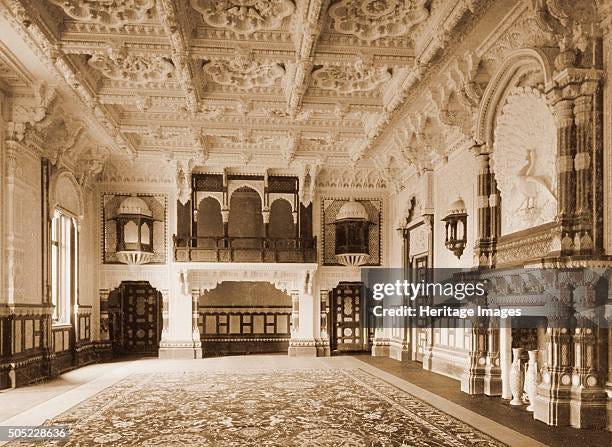My first glimpse of the Durbar Room, at Osborne House on the Isle of Wight, was a sort of epiphany.
It was largely the creation of Sardar Bahadar Bhai Ram Singh, whose portrait - with which this post begins - hangs in the Indian corridor which was added to the house in the 1890s. When you enter it, you do not know where you are - England? India? Or in that dream-land which was Queen Victoria’s idea of India? And it was this dream-like quality which Bhai Ram Singh captured so well. When you enter a Temple or a Church, - if it has been well-designed - the architect(s) lead you by the hand. You “reset”. You are being asked to see existence on a different plane and in a different mode from the self you might take into a shop or a drawing-room. Likewise, here. You have entered the heart of a woman who had never set foot in India but styled herself the Empress of India, and who had such tender feelings for two Indians in particular - the Maharajah Duleep Singh (born Lahore, which today is in Pakistan, but it was India before the partition of 1947) and - a much lowlier figure, Abdul Karim, the so-called Munshi.
Keep reading with a 7-day free trial
Subscribe to A.N. Wilson to keep reading this post and get 7 days of free access to the full post archives.





